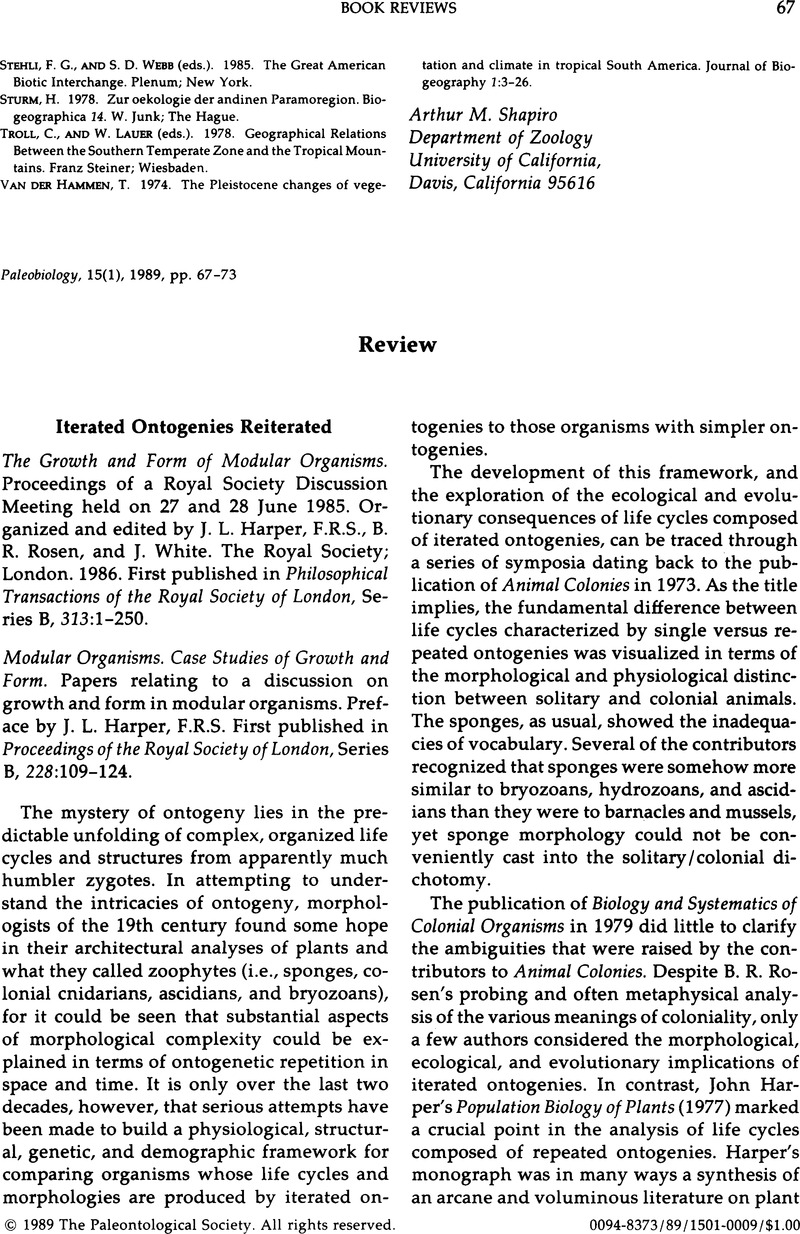Crossref Citations
This article has been cited by the following publications. This list is generated based on data provided by Crossref.
Jackson, Jeremy B.C.
1990.
A functional biology of clonal animals.
Trends in Ecology & Evolution,
Vol. 5,
Issue. 12,
p.
425.
Monro, Keyne
and
Poore, Alistair G. B.
2009.
THE EVOLVABILITY OF GROWTH FORM IN A CLONAL SEAWEED.
Evolution,
Vol. 63,
Issue. 12,
p.
3147.
Lidgard, Scott
Carter, Michelle C.
Dick, Matthew H.
Gordon, Dennis P.
and
Ostrovsky, Andrew N.
2012.
Division of labor and recurrent evolution of polymorphisms in a group of colonial animals.
Evolutionary Ecology,
Vol. 26,
Issue. 2,
p.
233.





